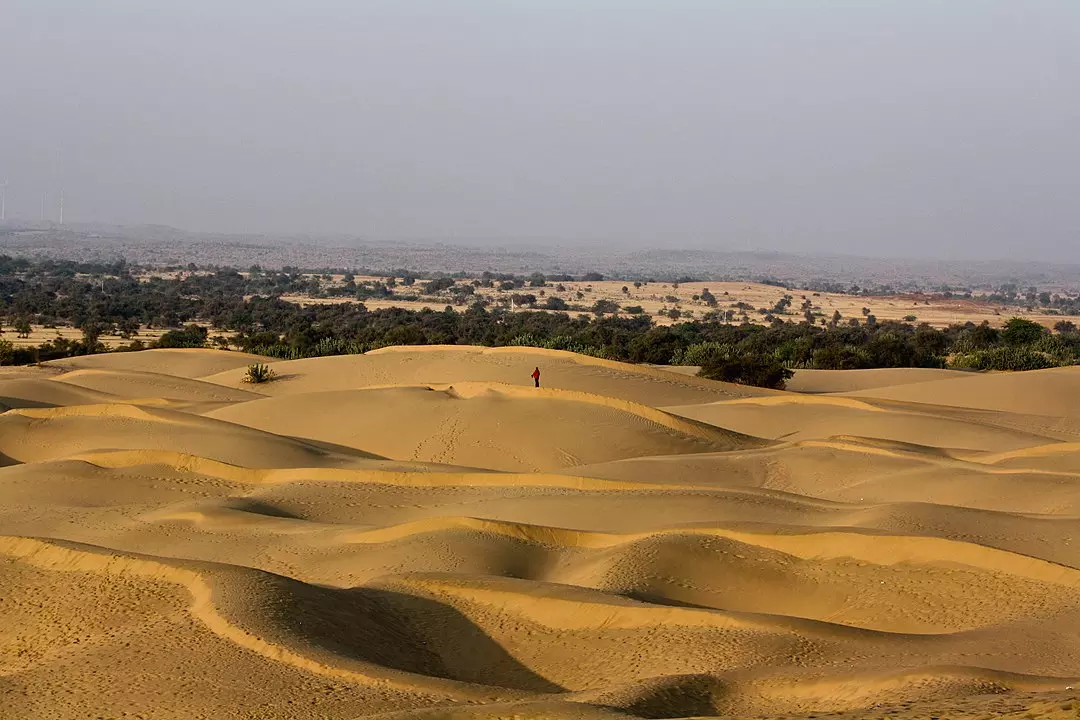
Thar Desert could go green by century's end due to climate change: Study
Unlike most desert expansion predictions due to higher temperatures, the Thar Desert could buck the trend and go green within a century, say researchers.

A study proposes that the Thar Desert in India, renowned for its dry and vast landscape, might experience a significant transformation as a result of the impacts of climate change.
While many deserts across the globe are predicted to expand with rising temperatures, the Thar Desert might defy this trend and actually turn green within the next century, the researchers said.
The Thar Desert is located partly in Rajasthan, and partly in the Punjab and Sindh provinces of Pakistan, covering over 200,000 square kilometres of territory. It is the world's 20th-largest desert and the world's 9th-largest hot subtropical desert.
Several studies have projected the growth of Earth's deserts under the influence of global warming. For instance, experts have estimated that the Sahara Desert could increase in size by over 6,000 square kilometres annually by 2050.
However, the newly published study, published recently in the journal Earth’s Future, offers an unexpected perspective on the Thar Desert.
By employing a combination of observations and climate model simulations, the research team found that the mean rainfall over the semi-arid northwest regions of India and Pakistan witnessed an increase of 10–50 percent between 1901 and 2015.
Under moderate greenhouse gas scenarios, this rainfall is anticipated to surge by 50–200 percent, they said.
Remarkably, the study indicates that an eastward shift of the Indian monsoon has been a pivotal factor contributing to the arid conditions in the west and northwest regions of India. Historically, these areas were thriving during the monsoon season, supporting the Indus Valley civilizations.
The researchers propose that a reversal of this trend, coupled with a westward expansion of the present-day Indian monsoon, could radically transform the west and northwest regions of India into a humid "monsoonal" climate.
This transformation, in turn, might enhance food security for the nation's burgeoning population.
According to the study's corresponding author, B. N. Goswami, from the Department of Physics at Cotton University in Guwahati, understanding the dynamics of the Indian summer monsoon is key to comprehending how the climate could green the Thar Desert.
"This happens due to the seasonal migration of the rainband or the active Inter-Tropical Convergence Zone (ITCZ) from south of the equator over the Indian Ocean in winter to about 25 degrees North in summer over the Indian continent,” Goswami told PTI.
The expansion of the warm water pool in the equatorial Indian Ocean, brought about by climate change, has led to a westward shift of the ITCZ. This, in turn, drives rain further westward over the land during the summer months.
Goswami notes that this phenomenon is unique to the Indian monsoon and is crucial for the potential greening of semi-arid regions in northwest India.
The study emphasizes that this trend could lead to significant agricultural and socio-economic changes in the region.
The research team, including P. V. Rajesh from the Indian Institute of Tropical Meteorology in Pune, compiled weather data from South Asia over the past 50 years.
By analysing changes in monsoon duration and concentration, they fed historical weather and sea surface temperature data into a climate model to predict future changes under various greenhouse gas scenarios.
The results of their analysis indicate that the Indian monsoon is indeed expanding westward, leading to a 10 per cent decrease in mean rainfall in the northeast and a 25 per cent increase in the west and north-west during the historical period.
The authors of the study underscore the potential benefits of harvesting this increased rainfall, foreseeing substantial improvements in food productivity that could revolutionise the socio-economic landscape of the region.
The researchers said though this unexpected turn of events presents opportunities, it also raises concerns. As the Thar Desert potentially transforms into a greener landscape, the delicate balance of its ecosystem and the broader implications for the environment and local communities remain subjects of ongoing research.
(With agency inputs)

